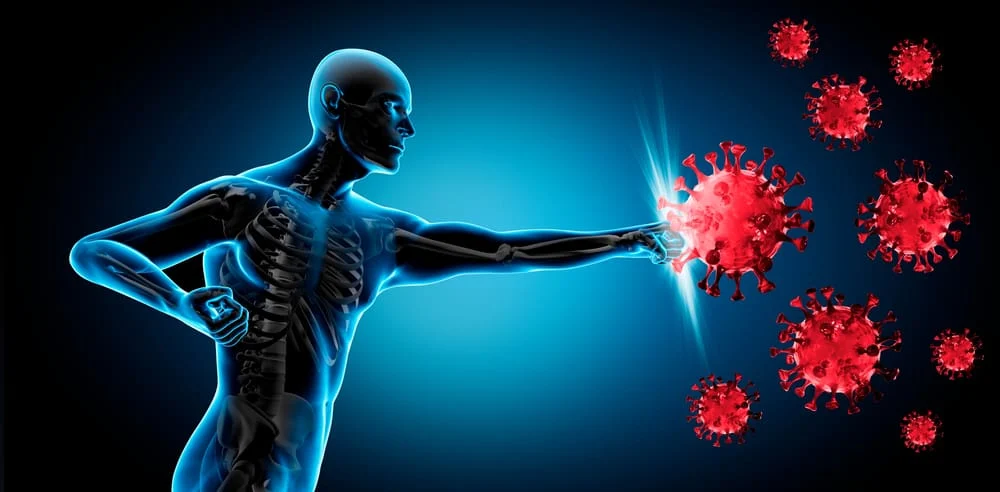
The immune system is composed of a complex and highly coordinated set of physiological and biochemical processes designed to manage cell and tissue injury from chemical, physical, and pathogenic agents.1 Thus, aberrations in immune system function will hinder an organism’s ability to induce defensive and regenerative processes in an effective and meaningful manner.
One potential nutritional intervention to support optimal immune system function could be the inclusion of olive leaf extract (OLE) in the human diet. As such, the following will consider OLE in greater detail, as well as its relationship to immunity and homeostasis.

Olive tree leaves, also known as Olea europea L., have been used as a traditional medicine along the Mediterranean basin for generations.2 Furthermore, such leaves are readily available, cost-effective, and are a natural source of agents containing both antioxidant and antibacterial capacities.2(85)3 Said agents include polyphenols such as oleuropein; a substance which has potent antioxidant activity, and may also impart cardio-protective, neuroprotective, anti-cancer, and anti-inflammatory effects.3(17409)
Khanum et al3(85) noted that a large body of evidence has suggested that oleuropein and its metabolite, hydroxytyrosol (HT), can exert its effects mechanistically via pathways such as enhanced nitric oxide production (vasodilator) from murine macrophages, inhibition of 5-lipooxygenase and 12-lipooxygenase (involved in clotting), as well as free radical scavenging (manages oxidation).5 Ultimately, such characteristics of OLE has made its use exceedingly appealing in supporting immune function.

As a means of exploring the anti-inflammatory/antioxidative effects in a deeper fashion, Khanum et al3(86) conducted an in-vitro (isolated blood samples) study whereby 25 blood samples were procured from 25 healthy donors (ages 32-52). Peripheral blood mononuclear cells (i.e., lymphocytes, monocytes, natural killer cells) were isolated from said blood samples.
Furthermore, polyphenol extraction was carried out with two OLE preparations: extract A containing 15600 mg/kg polyphenols (resuspended in water) and extract B containing 24400 mg/kg polyphenols (resuspended in 70% ethanol).3(85-86) Once OLE extract A (3 mcg/ml) and extract B (3 mcg/ml) were prepared, cells were exposed to PMA, a tumor promoter (positive control), while other cells remained unstimulated (negative controls).3(87) Samples were incubated for 24 hours at 37 °C and prepared for extract A and B esposures. In the following sections, results from said OLE exposures will be covered in greater detail, as well as the implications upon immune function.

According to Khanum et al,3(87) the total number of lymphocytes, including CD3+ and CD8+ cells, were considered statistically significant in the presence of extract A when compared to total lymphocytes present in extract B. Additionally, CD3+ and CD4+ cells were found to have been lowered when exposed to extract B.3(87) However, both extracts induced an statistically significant increase in absolute numbers of CD16+ and CD56+ cells, with extract A being slightly more effective in producing the same.3(88)
Other intriguing findings included increases in interferon gamma, or IFN-γ, (a cytokine critical in both innate and adaptive immunity) with both A and B extracts, though extract A was statistically more effective than extract B in producing the same.3(88) IL-10 (an anti-inflammatory cytokine) concentration levels were significantly decreased when peripheral blood mononuclear cells were treated with extract B in comparison to extract A and untreated cells (negative control). Furthermore, the equilibrium between IL-10 and IL-17 (a pro-inflammatory cytokine) was better regulated under extract A exposure; such is relevant as IL-10/IL-17 balance is key in preventing chronic allergic, autoimmune, and inflammatory diseases.3(90)
In conclusion, the immune system is composed of a complex and highly coordinated set of physiological and biochemical processes designed to manage cell and tissue injury from chemical, physical, and pathogenic agents. As such, aberrations in immune system function will hinder an organism’s ability to induce defensive and regenerative processes in an effective and meaningful manner. The in-vitro study by the aforementioned researchers indicated encouraging results using OLEs to augment and support various constituents of the immune system. Thus, inclusion of OLEs in the diet may be beneficial to individuals who desire natural methods of supporting optimal immune function, health, and overall quality of life.
References
1. Reisner EG, Reisner HM. An Introduction to Human Disease: Pathology and Pathophysiology Correlations. 10th ed. Burlington, MA: Jones & Bartlett Learning; 2017.
2. Magrone T, Spangoletta A, Salvatore A, et al. Olive leaf extract act as modulators of the human immune response. Endocr Metab Immune Disord Drug Targets. 2018;18(1):85-93. doi: 10.2174/1871530317666171116110537.
3. Khanum F, Zahoor T, Khan MI, et al. Antioxidant, antibacterial and functional-food packaging potential of leaf extract from Pakistani olive cultivars. Pak J Agri Sci. 2020;57(3):735-742. doi:10.21162/PAKJAS/20.8313.
4. Sun W, Frost B, Liu J. Oleuropein, unexpected benefits! Oncotarget. 2017;8(11):17409. https://www.ncbi.nlm.nih.gov/pmc/articles/PMC5392257/. Accessed July 22, 2020.
5. Yeung J, Holinstat M. 12-lipooxygenase: A potential target for novel anti-platelet therapeutics. Cardiovasc Hematol Agents Med Chem. 2011;9(3):154-164. doi:10.2174/187152511797037619.
-Michael McIsaac
